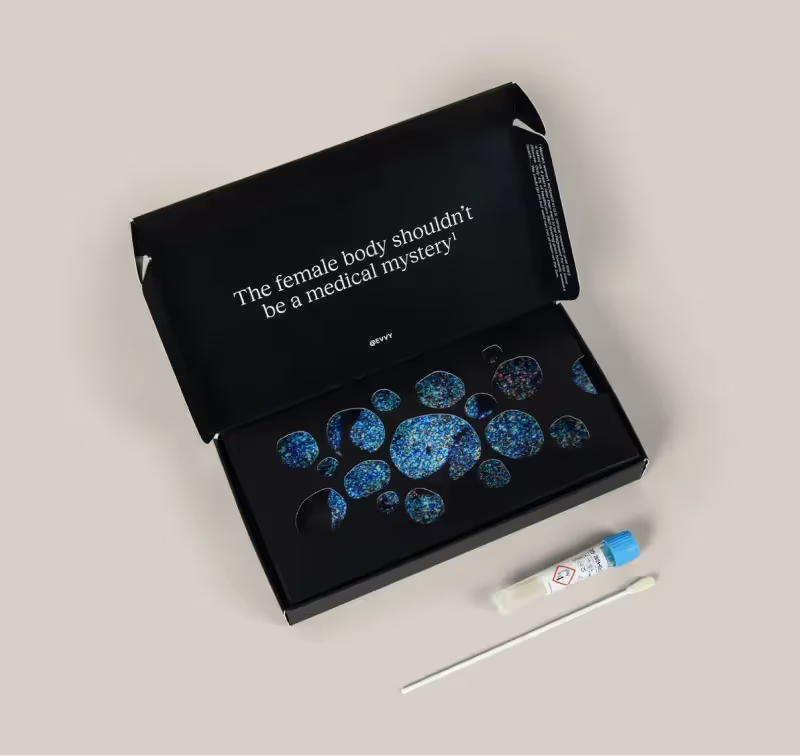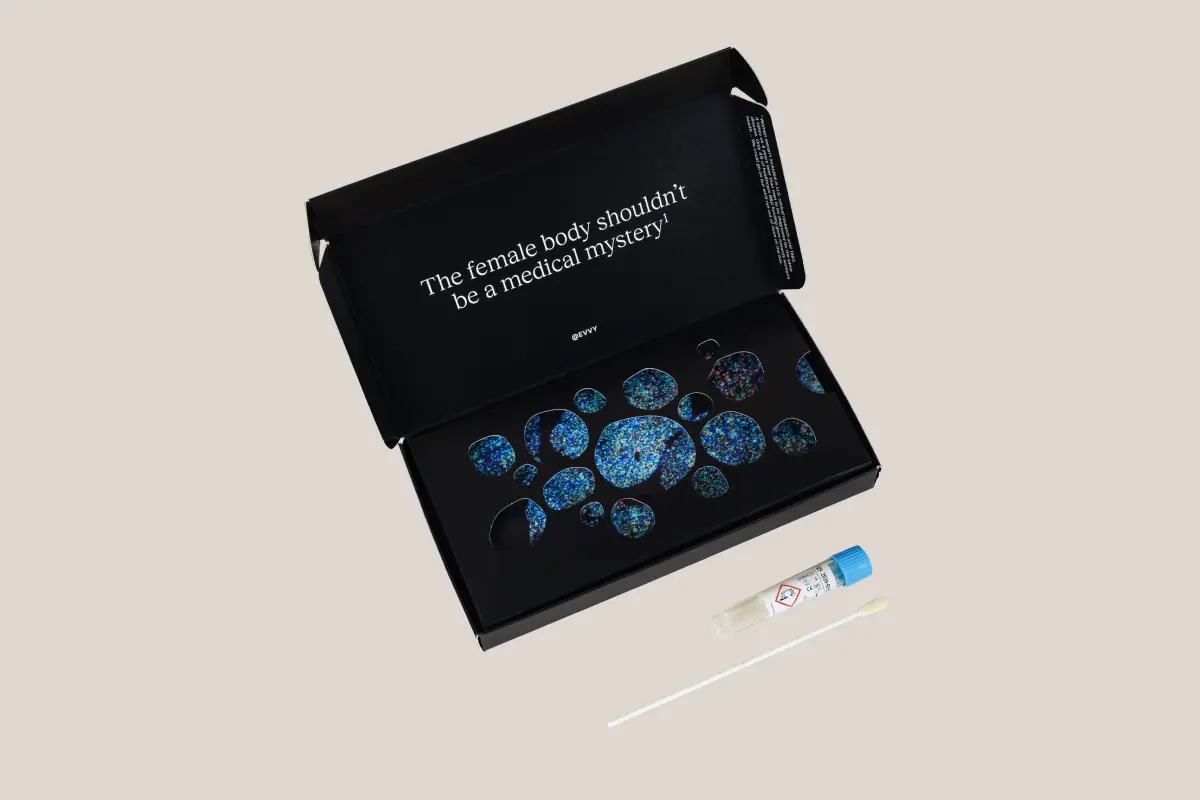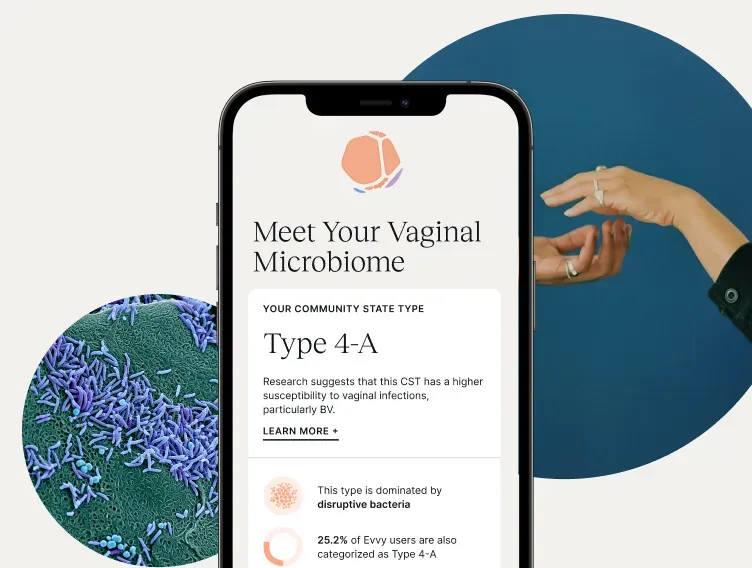

Treating Yeast Infections and BV at Home: What Really Works
Explore safe, natural home remedies to relieve yeast infection and BV symptoms in women—discover what works, how to use it, and when to seek medical help.
Words by Olivia Cassano
Scientifically edited by Dr. Krystal Thomas-White, PhD
Medically reviewed by Dr. Sameena Rahman, MD
There are few things as annoying as having to deal with a vaginal infection. If you’ve ever had a yeast infection or bacterial vaginosis (BV), you’ll know firsthand how uncomfortable and disruptive it is to deal with itching, burning, unusual vaginal discharge, and a bad odor. So it’s only normal to want to get rid of these symptoms, stat. Especially if you deal with chronic yeast infections.
Booking an appointment with your healthcare provider can be time-consuming and costly, so you may be tempted to rummage through your pantry and try one of those at-home solutions you’ve read about online.
Unfortunately, most home remedies for vaginal yeast infections and bacterial vaginosis are largely ineffective and can cause more harm than good (despite what the internet says). But are there any legit home remedies for BV and yeast infections?
Few studies have looked at the effectiveness of at-home or natural treatments for vaginal infections. The studies that have been done have some limitations, such as needing a control group, a short follow-up period, or a small sample size. Therefore, some home remedies are still considered unproven. Below, we unpack the science (or lack thereof) behind the most popular home remedies for yeast infections and BV.
Do home remedies for yeast infections and bacterial vaginosis work?
When it comes to treating yeast infections and BV, many people turn to home remedies, hoping for a quick and natural fix. While some home remedies may offer temporary relief from symptoms like itching or irritation, the effectiveness of these treatments can be limited. Yeast infections are caused by an overgrowth of yeast, and BV is the result of an imbalance in vaginal bacteria, both of which often require more targeted treatments to fully resolve.
While certain natural remedies — like probiotic-rich foods, coconut oil, or garlic — are sometimes suggested, there's little scientific evidence to support their ability to completely eliminate infections without medication. The chances of getting rid of a yeast infection or BV without medication are lower, especially for recurrent or persistent cases. In fact, relying solely on home remedies might allow the infection to linger or return, since they don’t address the root cause of the imbalance.

Recurrent symptoms? Get Evvy's at-home vaginal microbiome test, designed by leading OB-GYNs.
Common home remedies for BV or yeast infection
There’s no shortage of “natural” home remedies floating on the internet. Below, we look at the science behind some of the most common suggestions.
Oregano oil and tea tree oil
Many plants and fungi produce natural antifungal compounds as a defense mechanism to ward off illness. Since a yeast infection is a fungal infection, some people believe that naturally anti-fungal essential oils (like oregano oil and tea tree) can kill the Candida fungus that cause vaginal yeast infections. While the logic makes sense, the science doesn't quite back it up.
The active ingredient in oregano essential oil is called carvacrol, which some studies have found to help against certain bacteria. In one in vitro study, it was shown to be good at killing Staphylococcus aureus, although not as effective as traditional antibiotics. In 2018, a study tested topically applied oregano oil to clear biofilms from wound infections that are usually resistant to commonly used antibiotics.
The problem is that all organisms that carvacrol has been tested on aren't typically found in the vagina, and the tests were all done in labs or mice.
One study also found that carvacrol inhibits the growth of multiple Lactobacillus species, which are good bacteria found in the vaginal microbiome. A study on rat vaginas found that carvacrol decreased the amount of yeast (Candida) found. But, the study didn't compare carvacrol treatment to the standard antifungal treatment. And while animal studies are helpful, the information we get from them is limited because the human vaginal microbiome is unique, making it hard to determine if the results of animal studies are relevant to humans.
Unfortunately, there aren't any human trials yet on oregano oil's effectiveness against vaginal infections. While its antimicrobial properties are promising, it's unclear whether it works against vaginal yeast infections or BV, and most importantly, whether it's safe to use vaginally.
Similarly, although some studies have suggested that tea tree oil has the potential to fight funguses — including Candida albicans, the strain responsible for most vaginal yeast infections — the effects of tea tree oil on a yeast infection haven't been proven in human studies. Its effectiveness against yeast infections or BV in humans remains unclear, and it can cause stinging, burning, and irritation as a side effect.
Kefir and yogurt
Kefir and yogurt are probably two of the most commonly recommended “natural” remedies for vaginal health. There’s a lot of research showing that fermented foods (including kefir, sauerkraut, plain yogurt, etc.) are a great way to look after your gut microbiome, but there’s no conclusive evidence to say that eating food with live cultures helps treat or prevent future yeast infections — let alone treat them.
The theory is that doing so supports a healthy gut microbiome and might indirectly benefit the vaginal microbiome, but the link between the gut and vaginal microbiome is not well understood. The good thing about fermented milk products is that they often contain Lactobacillus, which is important for vaginal health. That’s why they’re often marketed for women’s health in general. However, there aren’t any studies that specifically looked at kefir and the vaginal microbiome or BV. As for studies about the consumption of probiotics in yogurt, there’s conflicting evidence on whether the probiotics actually get into the vagina.
Some people also believe that applying kefir or yogurt directly onto the vulva and vagina can treat a yeast infection. There’s no evidence that this helps, and it might make things worse! Even if you buy yogurt with live cultures of lactobacilli in it, it’s unlikely that they’ll colonize in your vagina and ward off Candida albicans yeast. Plus, yogurt contains naturally occurring sugar that yeast thrives on, so you really don’t want to risk it.
Garlic
Garlic has natural antifungal properties, so it’s often touted as a natural treatment for yeast infections, which are caused by an overgrowth of specific fungi in your vaginal microbiome (most commonly, Candida albicans). One small study claimed that oral supplements containing garlic could be as effective as oral antifungal medications used to treat vaginal yeast infections (fluconazole). However, all of these treatments are unproven. No large-scale, well-controlled studies have looked at the effects of garlic on vaginal infections.
Some people even try applying garlic directly into their vagina, but it’s really not a good idea. There aren’t any studies on the use of garlic vaginally, and regardless of its antifungal properties, there’s no evidence that it can kill the fungal strains that cause yeast infections, specifically. Plus, putting anything (even if it’s “natural”) on your vulva or in your vagina can potentially throw off your natural pH, making an infection worse.
Coconut oil
Coconut oil is generally safe to use on your hair and skin, so surely it’s safe for your vagina too, right? Well, we don’t know that for sure. And we also don’t have any evidence that it can treat a vaginal yeast infection or BV.
Coconut oil contains high amounts of glycerol monolaurate (GML). Just like soap, GML is a surfactant that breaks up oil and grease. It’s this activity of breaking up lipids that gives it antimicrobial effects.
Some studies have shown that GML works against Gram-positive (Staphylococcus, Streptococcus), Gram-negative (Gardnerella, Prevotella), and Gram-variable (Mycoplasma) organisms linked to vaginal infections. Other evidence shows that it can inhibit the growth of Candida and Gardnerella (the bacteria most commonly linked to BV), without affecting the “good” bacteria in your vaginal microbiome, so why isn’t it used to treat vaginal infections?
Because GML hasn’t been tested in humans, it has been tested on the lab bench and in monkeys, but not in human vaginas. Also, remember that coconut oil is partially made up of GML, but it has other components as well. We also don’t know what an effective dose is for the average woman dealing with a vaginal infection.
It’s also pretty tricky to keep high levels of GML inside the vagina. The vagina is a self-cleaning organ and tends to get rid of goopy things it doesn’t need. But there’s a research group trying to formulate a vaginal cream with varying levels of GML, so we may know more in the future.
Apple cider vinegar
The wellness world loves apple cider vinegar for a myriad of health benefits, including everything from skin health to (supposedly) weight loss, but it’s not an effective remedy for a vaginal yeast infection.
One study did show that apple cider vinegar’s antifungal properties could help against yeast infections in the mouth, but that doesn’t necessarily mean that it’s effective against the strains that are present in the vagina.
Another theory is that thanks to its high acidity and low pH, apple cider vinegar could balance your vaginal pH. But yeast infections don’t always disrupt your pH, and like we covered above, it’s not something you really want to mess with. Save your apple cider vinegar as a salad dressing!
Boric acid
OK, so it’s not technically “natural” but if you've been looking for some at-home remedies for a vaginal yeast infection or BV, you may have come across boric acid as a potential solution. While some studies have shown that boric acid suppositories can be helpful in certain cases, doctors generally recommend against using boric acid as a first-line treatment.
Boric acid suppositories are worth considering when traditional antifungal or antibiotic treatment fails, if you have recurrent yeast infections, or if your infection is caused by a treatment-resistant strain of Candida.
You should consult with your healthcare provider before taking boric acid, even though it's available over the counter. Your provider can help you determine if boric acid is the right choice for you and ensure that you use it safely.
Is it possible to get rid of BV or yeast infection in 24 hours?
While it would be great if you could get rid of a BV or yeast infection in 24 hours, the reality is that it typically takes a bit longer for a full recovery.
Most treatments, whether prescription or over-the-counter, need a few days to start working and clear up the infection. That said, if you're feeling frustrated by itching or irritation in the meantime, there are products like Evvy's Anti-Itch Vulva Cream that can offer fast-acting relief from external discomfort while you wait for your treatment to kick in.
Just remember, while you might feel better soon, it’s important to stick with your full course of treatment to make sure the infection is completely gone. Always talk to your healthcare provider if you're unsure about how to best treat your symptoms.
When to seek medical help
Knowing when to seek medical help for a BV or yeast infection can make all the difference in getting the right treatment and avoiding complications. Really and truly, you should see your healthcare provider as soon as you notice unusual symptoms, such as unusual vaginal discharge, odor, and itching or burning sensation. That said, we know finding the time to see a doctor isn't always easy.
If you've tried over-the-counter remedies and the symptoms aren't improving after a few days, or if they keep coming back, it’s time to see a doctor. You should also seek help if you experience severe pain or notice any bleeding that isn't caused by your period.
Likewise, if you're pregnant, have a weakened immune system, or if you're unsure whether you're dealing with a yeast infection or BV, it’s always best to reach out to a healthcare provider to get a proper diagnosis and treatment plan.
FAQs
What can you eat or drink to cure a yeast infection?
Although some people claim that cutting out sugar or processed food can treat yeast overgrowth, there’s no solid evidence that a specific food or drink can treat a yeast infection. Diet alone is not a cure for yeast infections, but you can treat yeast infections with over-the-counter or prescription antifungals.
Can you flush out a yeast infection with water?
No, water won’t flush out a yeast infection. To treat a yeast infection quickly, you can use over-the-counter or prescription antifungal medication like fluconazole, terconazole, or miconazole. These treatments come in various forms, such as vaginal suppositories, creams, ointments, or oral tablets. Your doctor will be able to recommend the best treatment option for you based on the severity of your yeast infection and whether you've had frequent yeast infections in the past.
Can I treat BV without antibiotics or medications?
Unfortunately, there aren’t any proven home remedies for BV. Because it's a bacterial infection, can be treated with antibiotics prescribed by your healthcare provider. There is some evidence that boric acid might treat certain BV-causing bacteria, but it’s really important to see your doctor or OBGYN if you suspect you have BV before self-medicating. They’ll be able to recommend the best antibiotic treatment based on your symptoms and which bacteria are causing the BV.
Can sitting on hot water and salt cure a yeast infection?
No, there’s no evidence that sitting over hot water (a practice known as “vaginal steaming”) can treat vaginal infections — with or without salt. Yeast especially loves heat and moisture, so if anything it may make it harder to treat an active infection.
How do you wash out a yeast infection?
You can’t “wash out” a yeast infection, unfortunately. While washing your vulva with warm water (and fragrance-free soap, if you want) can keep the area clean, yeast infections are caused by an overgrowth of Candida in the vaginal canal. You may think that douching will help wash out the vagina, but it can wash away protective bacteria and alter your vaginal pH, giving yeast and other pathogens a better chance to overgrow.





